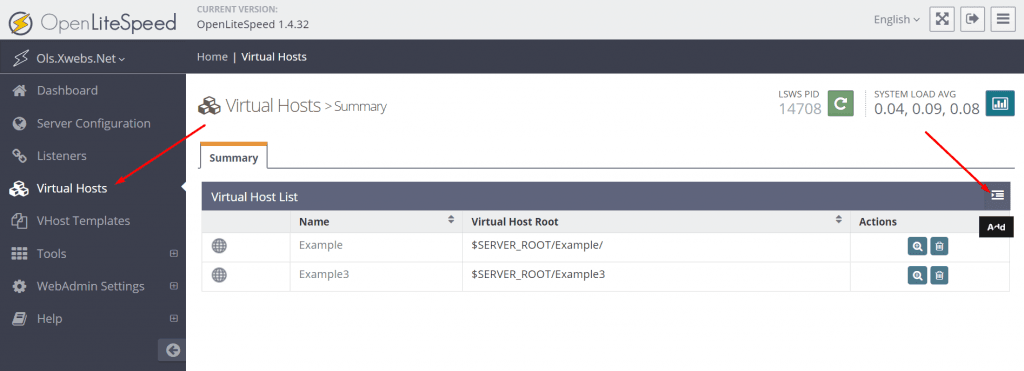
There are many ways to install a plugin for WordPress on your website. These steps differ depending on the plugin. First, upload the file. Once you have done this, click the Activate Plugin link to begin using your plugin. You will then need to select the settings you would like your plugin to have.
Uninstalling a WordPress plugin
After installing a WordPress plugin, you can uninstall it by deleting all its files from your site. This can be done for several reasons. You can also remove a plugin if it is incompatible with your theme or contains security holes. Regardless of the reason, you should be very careful when uninstalling a plugin.

Updating a wordpress plugin
There are several things you can do if your WordPress plugin doesn't work or does not update. Log in to WordPress. Navigate to wp–content/plugins. Right-click on the folder and choose Rename. Make sure you add the -old suffix to your name. Alternativly, you can remove the plugin from your site.
Choosing a compatible plugin
WordPress plugins play a critical role in your site’s functionality. But, you cannot rely on any plugin available. You have to select the one that best suits your requirements and current situation. These tips will help you make the right selection.
Using an SFTP clients
An SFTP client can be used to install a WordPress plug-in. This allows you to manage your files directly on the website server. As you can see, the SFTP protocol is more advanced than FTP, which means you will not be faced with security risks.
Using a word processing program
While it may seem difficult to install WordPress plugins from your word processor using WordPress, it is possible. All you need to do is follow a few simple steps. WordPress includes a built in editor that is similar to many word processors. It even offers additional editing tools, and the ability to print your documents.

A zip file is used
You can upload a zip file if you don't know how to install a WordPress plug-in. Simply click the "Choose File" feature on the plugin page and choose the zip file. Remember to include the extension. Next, you will need to register the plugin for your WordPress site. Once you are done, click "Activate Plugin". This will activate the plugin.
FAQ
What is a responsive web design?
Responsive Web Design is a method of designing responsive websites. It allows content to display on all devices (desktop computers, tablets and smartphones), so that it can be viewed easily on any device. This allows users to simultaneously view a website from one device while still being able to access other features, such as navigation menus and buttons. RWD is intended to ensure that any user viewing a site views the exact version on their screen.
For example, if you were building a website for a company whose products sell primarily through eCommerce, you would want to ensure that even if a customer viewed your website on a smartphone, they could easily purchase items from your store.
A responsive site will automatically adjust its layout based on the device being used to view it. A website that is viewed on your laptop will display the same way as a desktop website. The page will look completely different if it's viewed on your smartphone.
This means you can make a website that looks amazing on all types of devices.
What is Website Design Software?
The website design software can be used by graphic artists and photographers, illustrators, writers and others who are involved in visual media.
There are two main types: cloud-based or desktop software. Desktop apps can only be installed locally on your PC and will require additional software to run on your system. Cloud-based solutions can be hosted remotely over the internet. They are ideal for mobile users as they don't require additional software.
Desktop Applications
Although desktop apps offer more features than cloud-based applications, they are not always required. Some people prefer working exclusively on a desktop app, as they find it easier. Some people prefer to use the same tool, regardless of whether it is on a phone or a laptop.
Cloud-Based Solutions
Web designers who want to save time and money should choose a cloud-based solution. These services allow you to edit any type of document from anywhere that has an internet connection. This means you can use your tablet to do some work while you wait for your cup of coffee to brew.
You will still need to buy a license if you choose to use a cloud-based program. You don't have to buy additional licenses for upgrading to the latest version.
If you have Photoshop, InDesign and Illustrator, these programs can be used for creating web pages.
How To Create A Static Website
There are two options available to you when building your first static website.
-
Content Management System, also known as WordPress. WordPress): You can download this software and install it on your computer. This software can then be used to create an indispensable website.
-
Create a static HTML website: You'll need to code your HTML/CSS code. If you have a good understanding of HTML, this is not difficult.
You might consider hiring an expert to design your website if you are planning to build a large site.
But starting, you should probably go with option 2.
Statistics
- When choosing your website color scheme, a general rule is to limit yourself to three shades: one primary color (60% of the mix), one secondary color (30%), and one accent color (10%). (wix.com)
- It's estimated that in 2022, over 2.14 billion people will purchase goods and services online. (wix.com)
- The average website user will read about 20% of the text on any given page, so it's crucial to entice them with an appropriate vibe. (websitebuilderexpert.com)
- At this point, it's important to note that just because a web trend is current, it doesn't mean it's necessarily right for you.48% of people cite design as the most important factor of a website, (websitebuilderexpert.com)
- It's estimated that chatbots could reduce this by 30%. Gone are the days when chatbots were mere gimmicks – now, they're becoming ever more essential to customer-facing services. (websitebuilderexpert.com)
External Links
How To
How do I get started as a UI Designer?
Two methods can be used to become a UI developer:
-
You can go through school and earn a degree in UI Design.
-
You can start freelance.
To be able to enter school, it is necessary to attend college/university and complete four years. This covers art, business, psychology, and computer science.
There are also state universities and community colleges that offer classes. Some schools offer free programs, while others charge tuition fees.
After graduating, you'll need to find employment. If you are going to be working for yourself, you will need to build your client list. You should network with other professionals to let them know that you exist.
You can also look for opportunities to intern at companies that specialize in developing web applications. Many companies employ interns to gain practical experience before hiring full time employees.
A portfolio will help you get more work once you have established it. Your work samples and details about the projects should be included in your portfolio.
It is a smart idea to send potential employers your portfolio via email.
You will need to market your services as a freelancer. Advertise your services on job boards such as Indeed, Guru, Guru, and Upwork.
Freelancers often receive assignments from recruiters who post openings online. These recruiters search for qualified candidates to fill positions within specific industries.
These recruiters typically provide the candidate with a project brief outlining the position's requirements.
You are not required to sign long-term contracts as a freelancer. However, if you plan to move forward, it is best to negotiate an upfront payment.
Many designers prefer working directly with clients, rather than through agencies. Although this may seem appealing, many people lack necessary skills.
Agency workers usually have extensive knowledge about the industry they are working in. They have access to resources and training that enable them to produce high quality work.
Agency workers also receive higher hourly rates.
However, the disadvantage of working with an agency is not having direct contact with your employer.
Being a successful UI designer requires you to be self-motivated, creative.
Also, you must have excellent communication skills both verbally and in writing.
UI designers create user interfaces and visual elements for websites.
They are also responsible for ensuring that the site meets the needs of its users.
This involves understanding the information users need and how to make your site work.
UI designers use various tools to create wireframes. Before they begin designing, wireframing allows them to visualize the page's layout.
It is easy to create your own wireframes using the online templates.
Some designers are solely focused on UI design while others blend UI design and graphic design.
Photoshop is a tool used by graphic artists to edit images.
Then, they use Adobe InDesign for layout and page design.
Photographers capture images using digital cameras or DSLRs.
The photos are then uploaded into a photo editing program. Here they can add captions, filters, or other effects.
After taking the photo, the photographer saves it in a file format that is compatible with the website.
It is important to take into consideration all aspects of the design process when building a website.
This includes research, planning and prototyping.
Research - Before you start a new project, it's important to do thorough research.
Planning - Once your research is complete, you can begin to create a plan.
Wireframing- A wireframe - A wireframe represents a sketch of an application or web page.
Prototyping -- Prototypes allow you to make sure that your final product is exactly what you imagined.
Testing – The prototype should go through multiple rounds to be tested in order for it to work properly.
Coding - The process of writing computer software code is called Coding.
Content Creation: Content creation can include everything from copywriting to managing social media profiles.
Publishing is the act of uploading files and making sure that the site can be accessed.
You'll need to be able to understand the different projects you work on as a freelance UX/UI Designer.
One example is that some companies only need wire frames, while others need complete prototypes.
You may be required to perform specific tasks depending on the project you accept.
For instance, if your job is to create wireframes you might have to make several over the course of time.
If you're asked to develop a site prototype, it may be necessary to make it fully functional.
It doesn't really matter what project you're working on, good interpersonal skills are vital.
Since most clients hire freelancers based on referrals, you must build solid relationships with potential employers.
In addition, you must be able to communicate effectively both verbally and in writing.
A portfolio is an important tool in any freelancer's arsenal.
It is a showcase of your work and a demonstration of your ability produce high-quality outputs.
Online portfolios can help you do this.
Find websites similar in your niche to get started.
Then, search these sites to see how each one presents its services.
After identifying the best practices that you believe to be most successful, you can go ahead and implement them.
It's also helpful to include links to your portfolio within your resume.